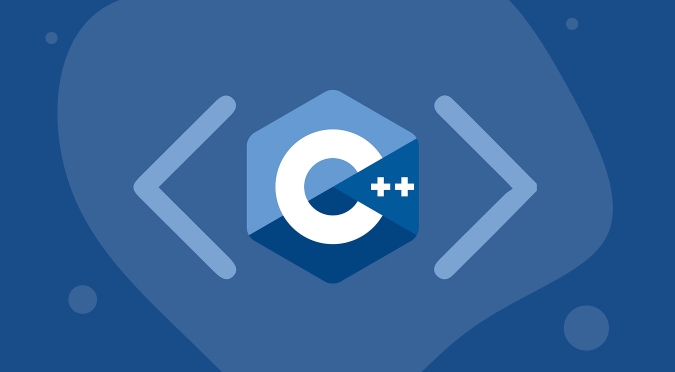What is the Standard Template Library (STL) in C ?
Jul 01, 2025 am 01:17 AMC STL is a set of general template classes and functions, including core components such as containers, algorithms, and iterators. Containers such as vector, list, map, and set are used to store data. Vector supports random access and is suitable for frequent reading; list insertion and deletion are efficient but access is slow; map and set are based on red and black trees, and automatic sorting is suitable for fast searches. Algorithms such as sort, find, copy, transform, and accumulate are commonly used to encapsulate them, and act on the iterator range of the container. The iterator acts as a bridge connecting containers to algorithms, supporting traversal and accessing elements. Other components include function objects, adapters, allocators, which are used to customize logic, change behavior, and memory management. STL simplifies C programming, improving efficiency and code reuse.

C's Standard Template Library (STL) is a common set of template classes and functions used to implement common data structures and algorithms. It is not an integral part of the C language itself, but it is widely integrated into the standard library and has become an important tool for modern C programming.

Container: "box" that stores data
The most core part of STL is containers, which are used to organize and store different types of data. Commonly used containers include vector , list , map , set , etc.

-
vectoris similar to dynamic arrays, supports random access, and is suitable for frequent read scenarios. -
listis a two-way linked list, with high insertion and deletion efficiency, but slow access to elements. -
mapandsetare based on red and black trees and are automatically sorted, suitable for occasions where quick searches and unique key values ??are needed.
For example: If you are dealing with a set of changing student scores, using vector may be more convenient than fixed-length arrays:
std::vector<int> scores = {85, 90, 78};
scores.push_back(93); // Add new scoreDifferent containers have different scenarios. When choosing, you should consider the access frequency and the cost of insertion and deletion operations.

Algorithm: Commonly used package
STL provides a rich set of algorithms (Algorithms), such as sorting, searching, copying, transformation, etc. These algorithms usually act on the iterator range of the container.
For example, sorting vectors using std::sort is very simple:
std::sort(scores.begin(), scores.end());
Common algorithms include:
-
find: Find whether an element exists -
copy: Copy the contents of one container to another -
transform: performs some kind of transformation operation on each element -
accumulate: sum or custom accumulation operations
The benefit of these algorithms is that they have been optimized and can be used with any compatible container, reducing the work of re-making wheels.
Iterator: a bridge connecting containers and algorithms
Iterators are objects used in STL to traverse container elements, a bit like pointers. It allows the algorithm to not know the internal structure of the specific container, but only needs to access the elements through an iterator.
You can think of an iterator as a "page turner" and view data page by page. for example:
for (auto it = scores.begin(); it != scores.end(); it) {
std::cout << *it << " ";
}STL supports multiple types of iterators, such as forward, reverse, constant iterators, etc. Understanding their differences can help write more efficient and secure code.
Other components: adapters, functors, allocators, etc.
In addition to the above three core parts, STL also includes some auxiliary components:
- Function Objects (Functors) : Objects that can be called like functions, often used to customize sorting or operation logic.
- Adaptors : Change the behavior of existing components, such as
stackorqueue, is adeque-based adapter. - Allocators : Responsible for memory management, and by default, it rarely needs to be implemented by itself.
Although these components are not as frequently used in daily development as containers and algorithms, they come in handy in advanced applications or performance optimization.
In general, STL provides efficient, flexible, and reusable data structures and algorithms, greatly simplifying C development work. Mastering its basic usage is a key step to becoming a qualified C programmer. Basically that's it.
The above is the detailed content of What is the Standard Template Library (STL) in C ?. For more information, please follow other related articles on the PHP Chinese website!

Hot AI Tools

Undress AI Tool
Undress images for free

Undresser.AI Undress
AI-powered app for creating realistic nude photos

AI Clothes Remover
Online AI tool for removing clothes from photos.

Clothoff.io
AI clothes remover

Video Face Swap
Swap faces in any video effortlessly with our completely free AI face swap tool!

Hot Article

Hot Tools

Notepad++7.3.1
Easy-to-use and free code editor

SublimeText3 Chinese version
Chinese version, very easy to use

Zend Studio 13.0.1
Powerful PHP integrated development environment

Dreamweaver CS6
Visual web development tools

SublimeText3 Mac version
God-level code editing software (SublimeText3)

Hot Topics
 C tutorial for people who know Python
Jul 01, 2025 am 01:11 AM
C tutorial for people who know Python
Jul 01, 2025 am 01:11 AM
People who study Python transfer to C The most direct confusion is: Why can't you write like Python? Because C, although the syntax is more complex, provides underlying control capabilities and performance advantages. 1. In terms of syntax structure, C uses curly braces {} instead of indentation to organize code blocks, and variable types must be explicitly declared; 2. In terms of type system and memory management, C does not have an automatic garbage collection mechanism, and needs to manually manage memory and pay attention to releasing resources. RAII technology can assist resource management; 3. In functions and class definitions, C needs to explicitly access modifiers, constructors and destructors, and supports advanced functions such as operator overloading; 4. In terms of standard libraries, STL provides powerful containers and algorithms, but needs to adapt to generic programming ideas; 5
 C Destructors: Practical Code Examples
Jun 22, 2025 am 12:16 AM
C Destructors: Practical Code Examples
Jun 22, 2025 am 12:16 AM
C destructorsarespecialmemberfunctionsthatautomaticallyreleaseresourceswhenanobjectgoesoutofscopeorisdeleted.1)Theyarecrucialformanagingmemory,filehandles,andnetworkconnections.2)Beginnersoftenneglectdefiningdestructorsfordynamicmemory,leadingtomemo
 What is the Standard Template Library (STL) in C ?
Jul 01, 2025 am 01:17 AM
What is the Standard Template Library (STL) in C ?
Jul 01, 2025 am 01:17 AM
C STL is a set of general template classes and functions, including core components such as containers, algorithms, and iterators. Containers such as vector, list, map, and set are used to store data. Vector supports random access, which is suitable for frequent reading; list insertion and deletion are efficient but accessed slowly; map and set are based on red and black trees, and automatic sorting is suitable for fast searches. Algorithms such as sort, find, copy, transform, and accumulate are commonly used to encapsulate them, and they act on the iterator range of the container. The iterator acts as a bridge connecting containers to algorithms, supporting traversal and accessing elements. Other components include function objects, adapters, allocators, which are used to customize logic, change behavior, and memory management. STL simplifies C
 How to use cin and cout for input/output in C ?
Jul 02, 2025 am 01:10 AM
How to use cin and cout for input/output in C ?
Jul 02, 2025 am 01:10 AM
In C, cin and cout are used for console input and output. 1. Use cout to read the input, pay attention to type matching problems, and stop encountering spaces; 3. Use getline(cin, str) when reading strings containing spaces; 4. When using cin and getline, you need to clean the remaining characters in the buffer; 5. When entering incorrectly, you need to call cin.clear() and cin.ignore() to deal with exception status. Master these key points and write stable console programs.
 What is inheritance in C ?
Jul 01, 2025 am 01:15 AM
What is inheritance in C ?
Jul 01, 2025 am 01:15 AM
InheritanceinC allowsaderivedclasstoinheritpropertiesandbehaviorsfromabaseclasstopromotecodereuseandreduceduplication.Forexample,classeslikeEnemyandPlayercaninheritsharedfunctionalitysuchashealthandmovementfromabaseCharacterclass.C supportssingle,m
 What is function hiding in C ?
Jul 05, 2025 am 01:44 AM
What is function hiding in C ?
Jul 05, 2025 am 01:44 AM
FunctionhidinginC occurswhenaderivedclassdefinesafunctionwiththesamenameasabaseclassfunction,makingthebaseversioninaccessiblethroughthederivedclass.Thishappenswhenthebasefunctionisn’tvirtualorsignaturesdon’tmatchforoverriding,andnousingdeclarationis
 What is the volatile keyword in C ?
Jul 04, 2025 am 01:09 AM
What is the volatile keyword in C ?
Jul 04, 2025 am 01:09 AM
volatile tells the compiler that the value of the variable may change at any time, preventing the compiler from optimizing access. 1. Used for hardware registers, signal handlers, or shared variables between threads (but modern C recommends std::atomic). 2. Each access is directly read and write memory instead of cached to registers. 3. It does not provide atomicity or thread safety, and only ensures that the compiler does not optimize read and write. 4. Constantly, the two are sometimes used in combination to represent read-only but externally modifyable variables. 5. It cannot replace mutexes or atomic operations, and excessive use will affect performance.
 How to get a stack trace in C ?
Jul 07, 2025 am 01:41 AM
How to get a stack trace in C ?
Jul 07, 2025 am 01:41 AM
There are mainly the following methods to obtain stack traces in C: 1. Use backtrace and backtrace_symbols functions on Linux platform. By including obtaining the call stack and printing symbol information, the -rdynamic parameter needs to be added when compiling; 2. Use CaptureStackBackTrace function on Windows platform, and you need to link DbgHelp.lib and rely on PDB file to parse the function name; 3. Use third-party libraries such as GoogleBreakpad or Boost.Stacktrace to cross-platform and simplify stack capture operations; 4. In exception handling, combine the above methods to automatically output stack information in catch blocks






